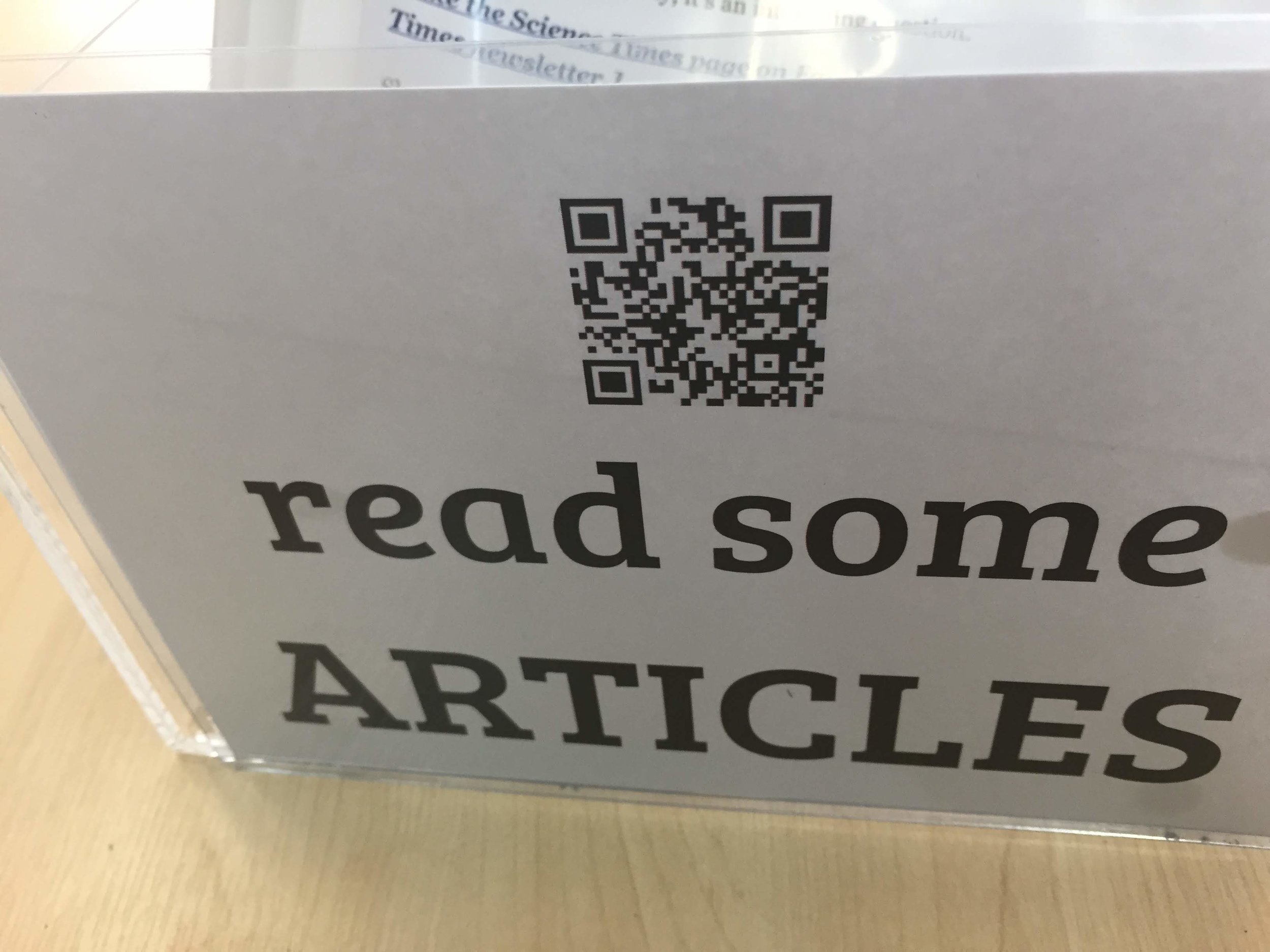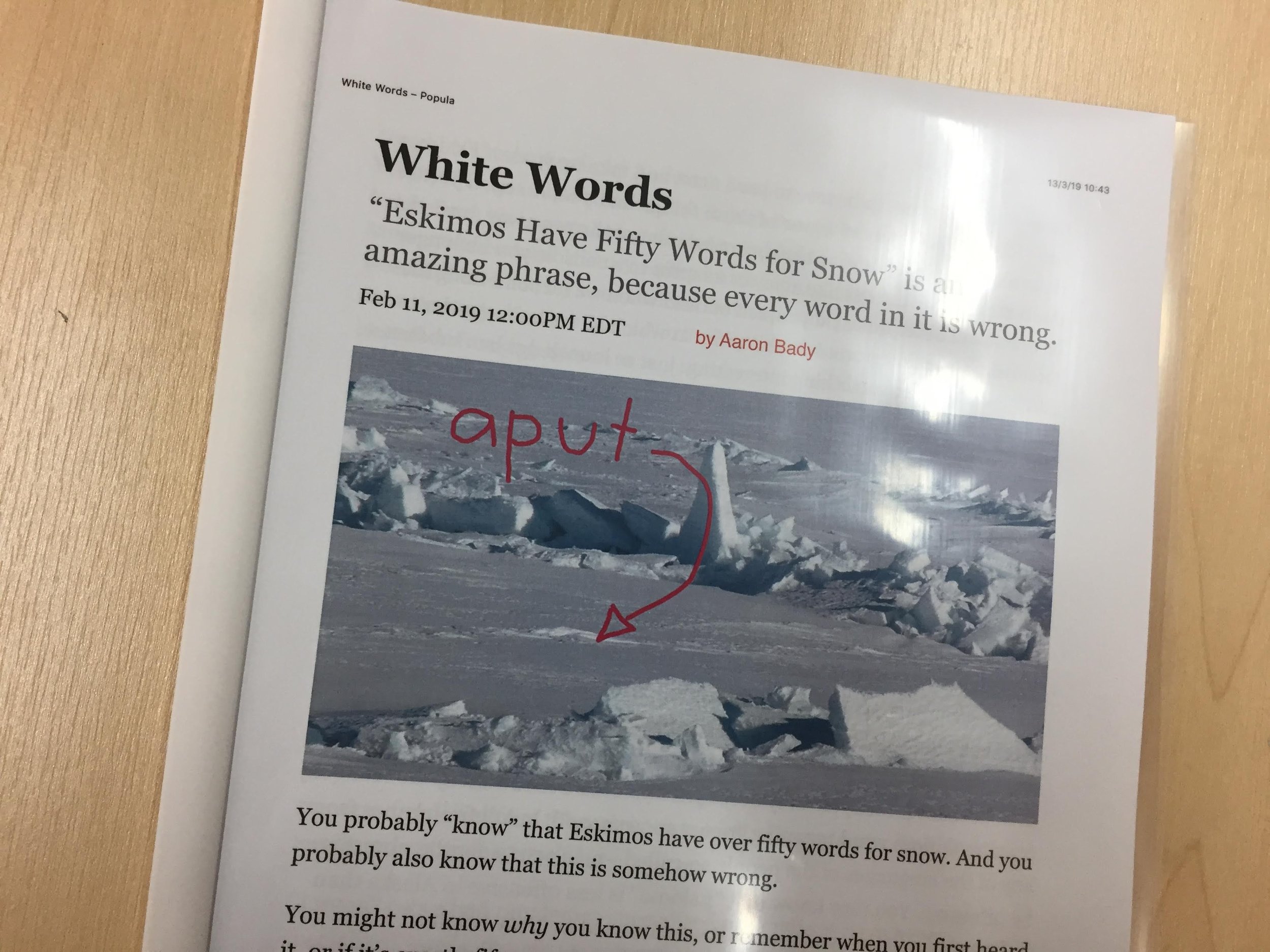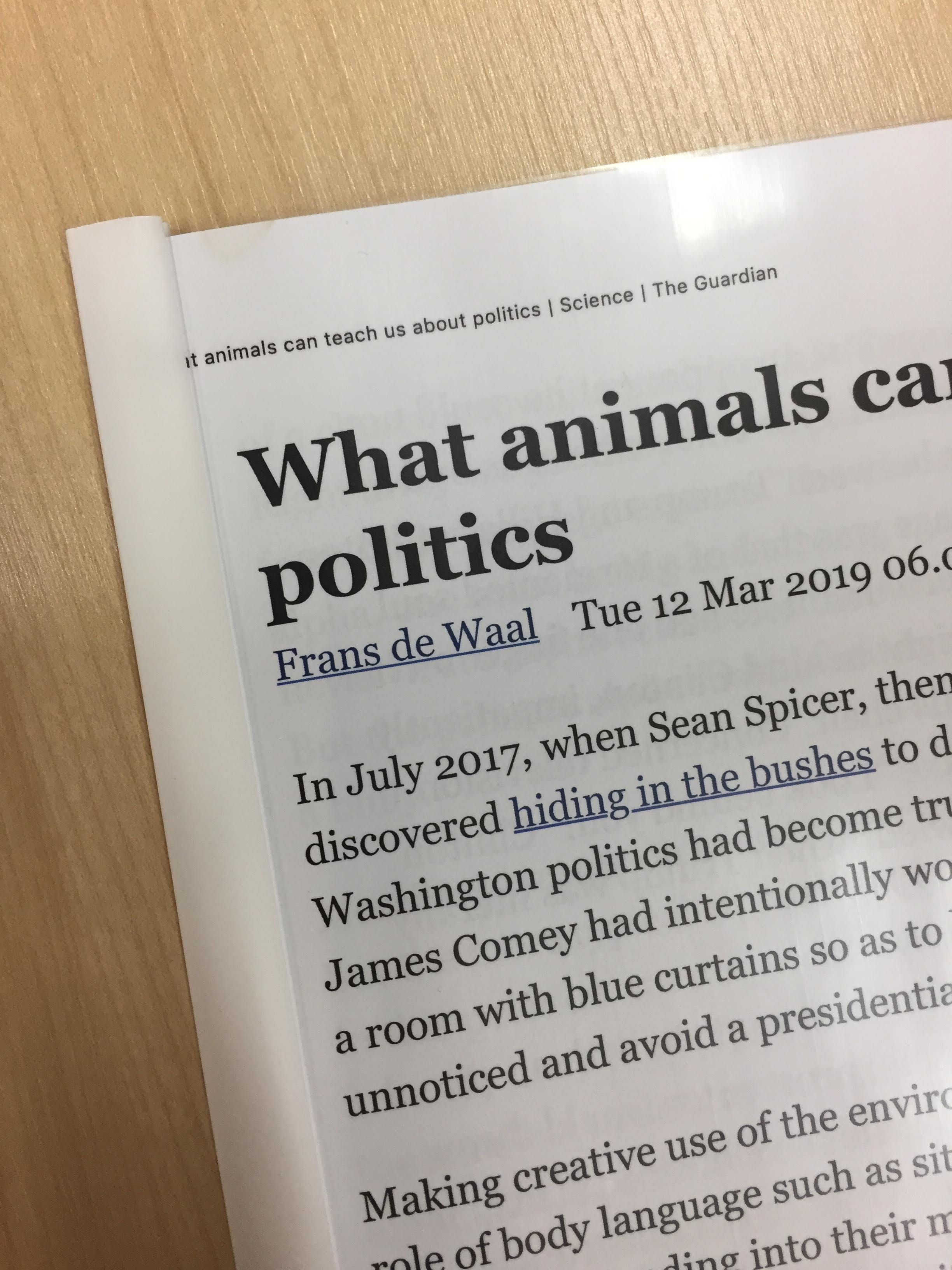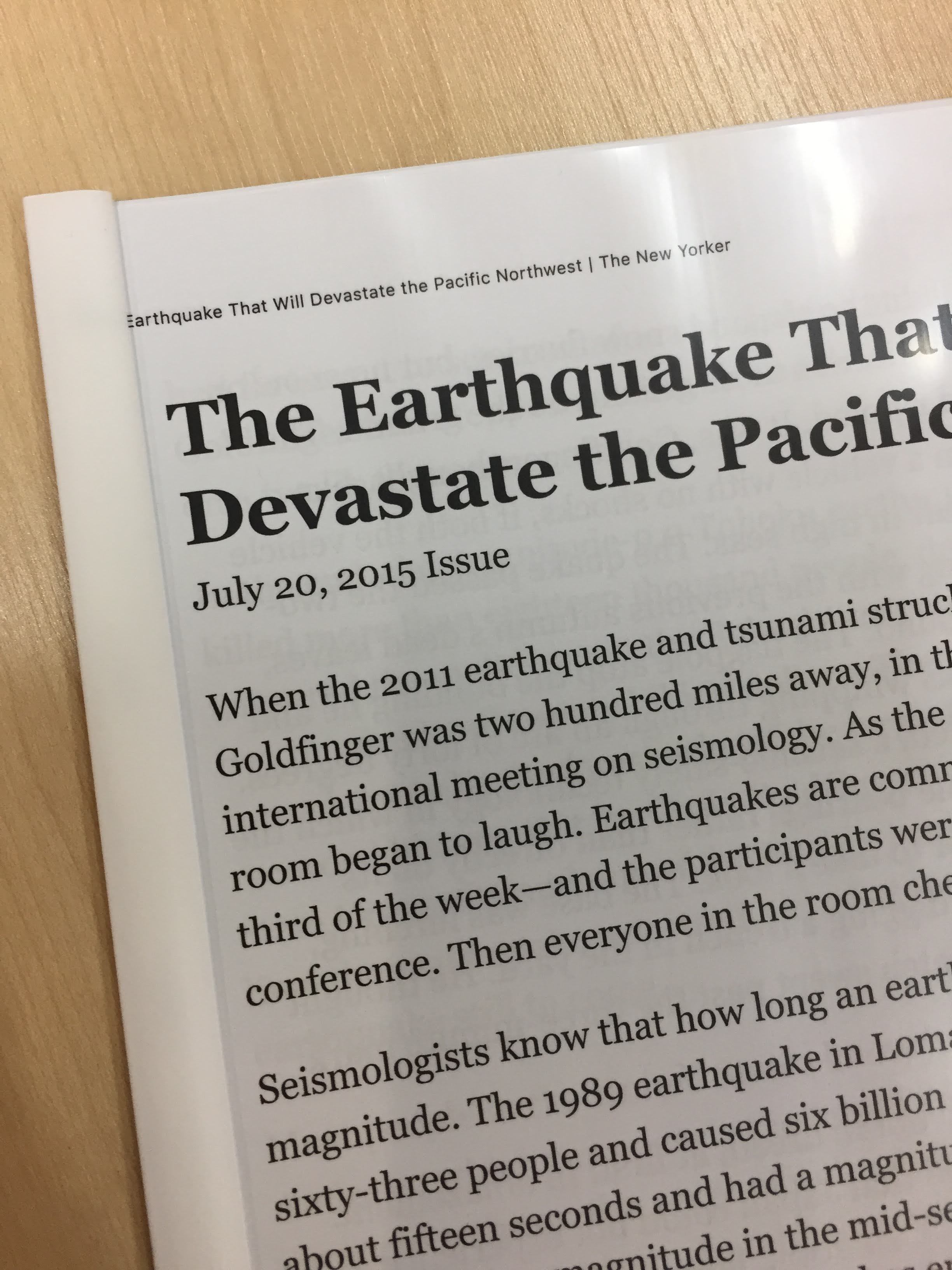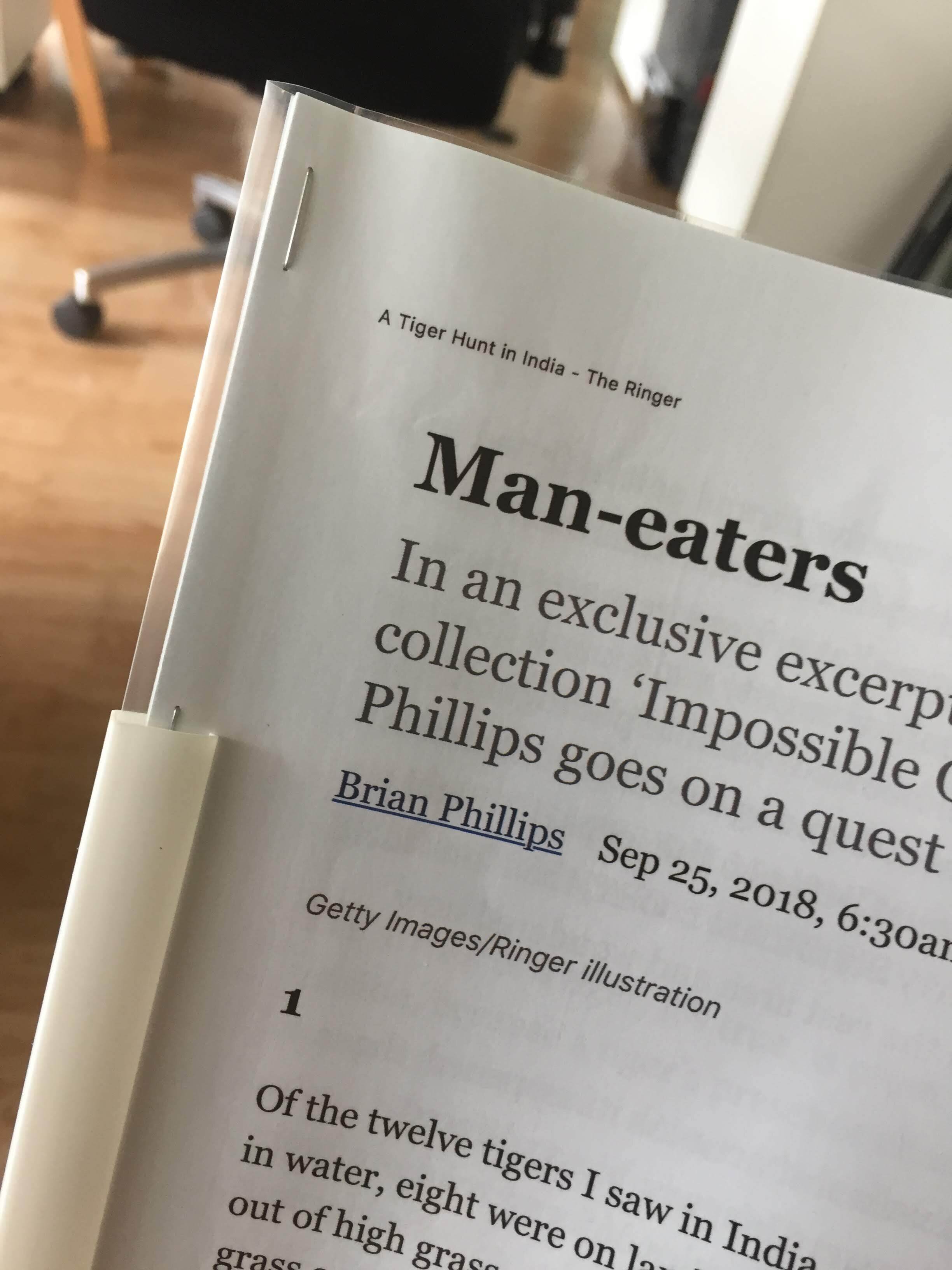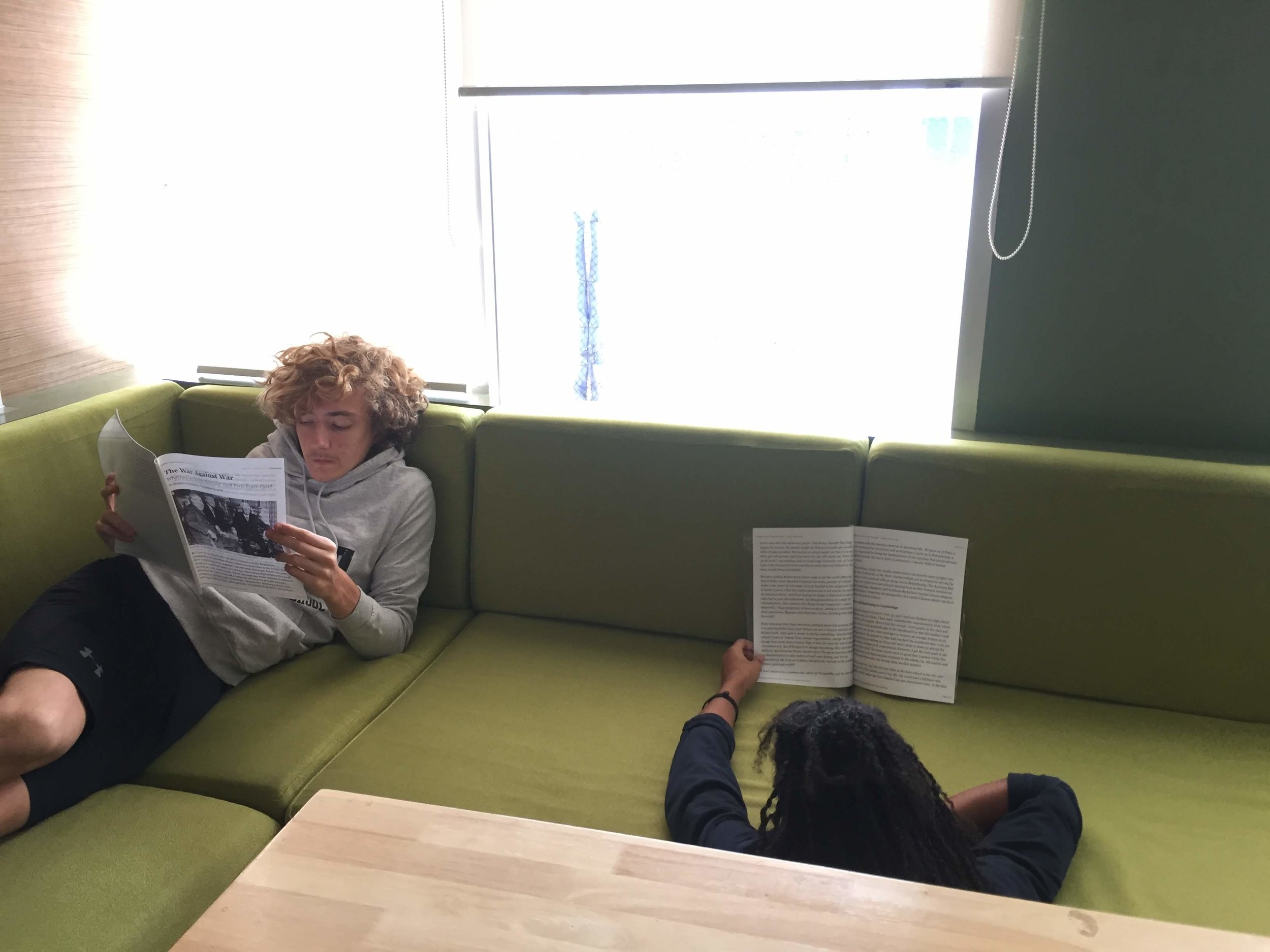“You’re printing out newspaper and journal articles on paper — and putting them in a plastic binder? Whatever for?”
For several reasons.
We want students to be reading the best of contemporary non-fiction and that includes long-form journalism and essays for sustained silent reading. Printouts are: Easy to see. Easy to read. Easy to share. Easy to stay focused on.
And we back them up with an online (Flipboard) magazine space and an archive (Google Folder: bit.ly/longarticles) of clean-form PDFs — where the articles have been saved in OSX Reader View format (stripped of ads and in a larger font).
(Feel free to use ours, but I would also encourage you and your students to start your own curation projects….)
The six threshold concepts we anchor our library program on here at NIST International School are: format, value, process, discourse, structures, and authority.
Printing out long-form articles helps me highlight the affordances of both format and process.
It also shows discourse, as respected writers (authority) engage in current events and academic arguments even on more casual platforms (i.e., not just in formal academic papers).
After all, long-form articles are both precursors of books and post-publishing marketing devices. So even if a student might not have the time to read a full-length, adult-audience non-fiction book, they can still be exposed to an author’s style and ideas via excerpts or profiles.
The format of printed material with a large font and no additional distracting additional material (e.g., ads) makes it easier for eyes to navigate the reading space. It’s faster to scan back and find the last place you stopped reading — if interrupted. And less text in the current field of vision prevents adept readers from scanning too far ahead. There’s less text in sight, yet still plenty ahead to engage you.
And if a physical copy of an article proves terribly interesting (and tends to disappear), such as this one:
I just print out another one……
The combination of print/online copies of articles helps us deliver the sweet spot of reading material (the intersection of appeal, accessibility, and availability — or in Design Thinking terms: desirability, feasibility, and viability). Students get exposed to ideas and authors that might lead them to tackle more challenging material — perhaps even full-length books!

